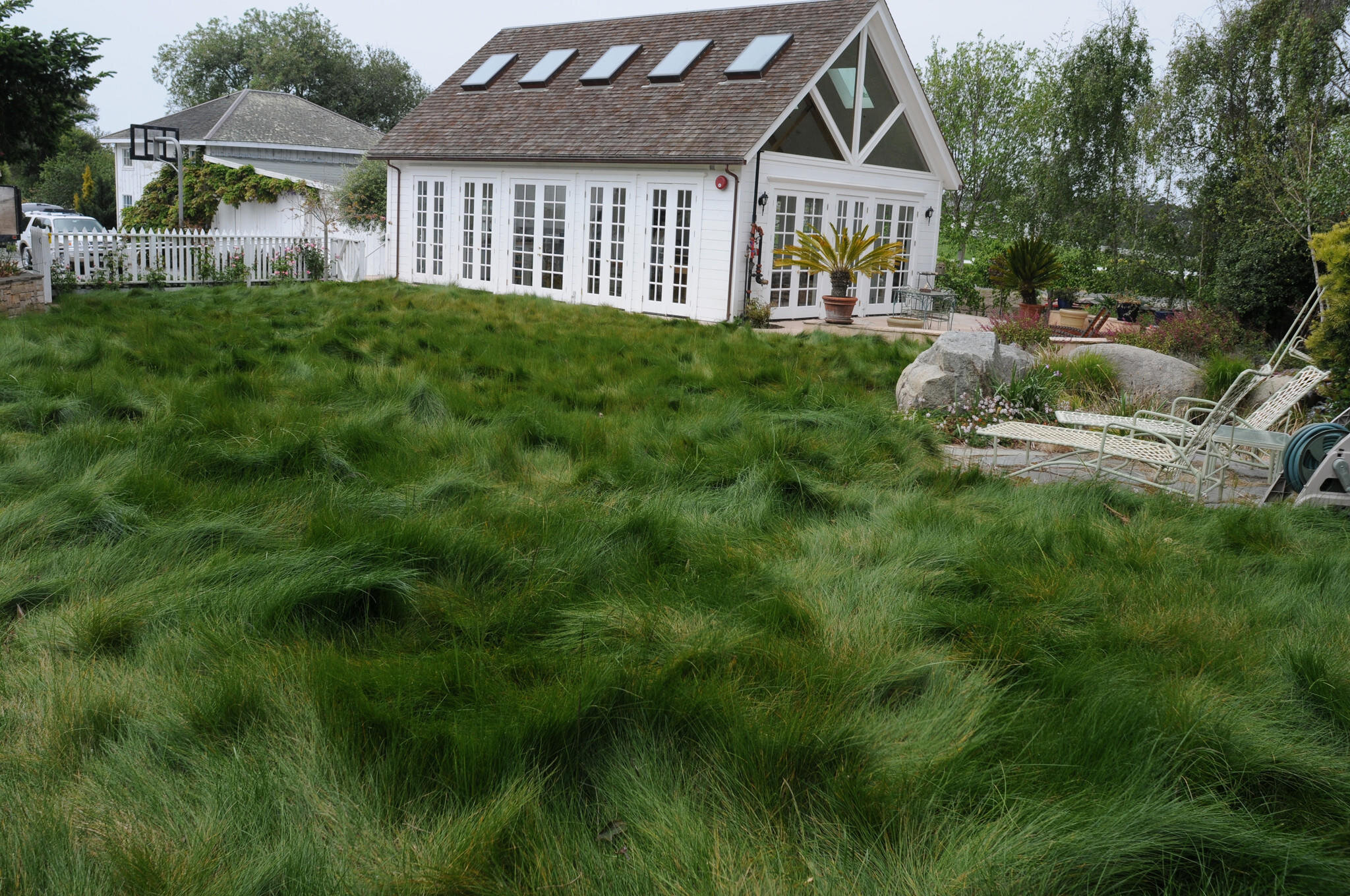The Best “No-Mow” Grasses
Have you ever run, no: frolicked, through a big grassy meadow and thought “I AM LIVING MY BEST LIFE!” Me too! That is why I love meadows. And you can get that look in your yard, too! There are a few components involved when creating a meadow, but today I am going to talk to you just about the low growing, green grass, sod alternatives that you don’t need to mow - which is where they get the name “No-Mow” (but you can, and should, probably mow them about two times per year to keep them tidy.) These grasses also generally require less fertilizer and water than regular sod, making it a smart, sustainable choice.
Even if you have a small yard, they help make it look larger and achieve that “je ne sais quoi”/ natural look especially if you pair it with a couple of boulders and a decomposed granite or flagstone path. They really help to accentuate a beautiful tree or even a bird bath or garden sculpture.
The best way to use them is to plant them as plugs, 6” pots, or 1 gallon shrubs in large, organic, swaths. (You won’t achieve a meadow look with a few spots here and there). The grassy meadow can also help guide your eye up to a taller feature or plant. Another fun perk of having a meadow: it’s fun to pop in some bulbs, forget that you planted them, and then a few months later you see something in the grass, wonder what it is and then you say “Oh yeah! I totally forgot about those!”
Disclaimer: picking up after your dog on these grasses is not preferable. So don’t plan on replacing Fido’s designated lawn spot with this. Here are a few varieties that I often recommend or have seen successful, but of course, check your zones and lighting location before planting:
Carex praegracilis | Clustered Field Sedge
I absolutely love all types of Carex grasses…This particular sedge is the tallest “No-Mow” grass that I recommend for a lawn alternative getting about 2’-3’ in height with graceful, mounding, weeping stems. It is a California native and tolerant of wet, alkaline areas, and even harsh roadside conditions. This grass can be mowed and requires less water than a standard grass.
Festuca rubra | Creeping Red Fescue
Creeping Red Fescues are sometimes sold in conjunction with other Fescue grasses as a “No-Mow” blend. This grass gets about 12-24” tall but can be cut short to about 4” or so. It does not require fertilizer and can be drought tolerant once established.
Buchloe dactyloides | ‘UC Verde’ Buffalo Grass
This grass requires significantly less water than a regular fescue grass and is well suited for Southern California. It gets about 4-6” in height, requires mowing only about every 3 weeks (or once a year for a more natural look) and spreads by rhizomes. A drawback is that it does go dormant if a hard frost occurs.





